
Hippety Hopper is a young kangaroo character in the Warner Bros. Looney Tunes series of cartoons. Robert McKimson introduced Hippety Hopper in Hop, Look and Listen (1948), which established the pattern for future Hippety Hopper cartoons. The character appeared in 14 theatrical cartoons between 1948 and 1964.

Albedo Anthropomorphics, or Albedo for short, is a furry comic book anthology series which was credited with starting the furry comic book subgenre that featured sophisticated stories with talking animals primarily intended for an adult audience. The first issue of Albedo was published in 1983; the most recent issue was published in 2005.
Cutey Bunny is a cartoon animal superheroine created by Joshua Quagmire for a humorous line of American underground comic books that first appeared through Army Surplus Komikz, which ran sporadically for five issues from 1982 to 1985. She has since appeared through various other comic titles such as Critters from Fantagraphics Books and one-shots such as Cutey Bunny's Pearl Harbor Beach Party from Rip Off Press. As her name suggests, Cutey Bunny's powers and concept are a pastiche of Go Nagai's manga creation, Cutey Honey.
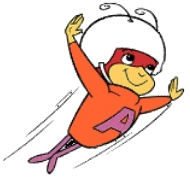
Atom Ant is a cartoon ant and superhero, created by Hanna-Barbera in 1965. Atom costarred in The Atom Ant/Secret Squirrel Show. In syndication, Atom Ant aired alongside Precious Pupp and The Hillbilly Bears. Reruns aired on cable on Cartoon Network and Boomerang in the 1990s and 2000s.

Fission Chicken is a comic book and webcomic character created by John Patrick (J.P.) Morgan (1957–2010). Fission Chicken is a short-tempered superhero chicken who can fly, is extremely strong, bulletproof, and can project power bolts from his hands.

Hoppy the Marvel Bunny is a fictional comic book superhero and anthropomorphic animal originally published by Fawcett Comics as a spin-off of Captain Marvel. He was created by Chad Grothkopf (1914–2005), and debuted in Fawcett's Funny Animals #1. Hoppy later became a property of DC Comics, and has made periodic appearances in stories related to Captain Marvel, today also known as Shazam or The Captain.
Andy Panda is a cartoon character who starred in his own series of animated cartoon short subjects produced by Walter Lantz. These "cartunes" were released by Universal Pictures from 1939 to 1947, and United Artists from 1948 to 1949. The title character is an anthropomorphic cartoon character, a cute panda. Andy became the second star of the Walter Lantz cartoons after Oswald the Lucky Rabbit. He achieved considerable popularity until being eventually supplanted by Woody Woodpecker.
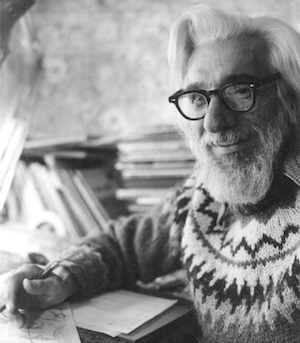
Vincenzo Francisco Gennaro Di Fago, known professionally as Vince Fago, was an American comic-book artist and writer who served as interim editor of Timely Comics, the Golden Age predecessor of Marvel Comics, during editor Stan Lee's World War II service.
Thunderbunny is a comic book about a boy who transforms into a superhero resembling a large pink humanoid rabbit. It was created by Martin Greim.

Comic Cavalcade was an anthology comic book published by DC Comics from 1942 to 1954.
Timmy the Timid Ghost is a fictional comic book ghost, whose adventures were published by Charlton Comics.

Neil the Horse is a comic book character created by Canadian cartoonist Katherine Collins in 1975. Neil is a happy, singing and dancing horse who likes bananas and milkshakes. Neil's adventures were syndicated in Canadian newspapers, published in a comic book series, and adapted for a radio musical.
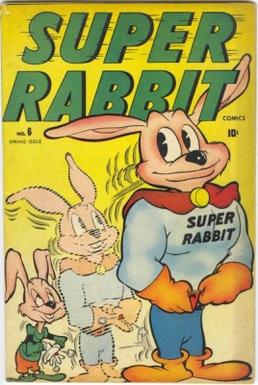
Super Rabbit is a fictional, talking animal superhero in comic books published by Timely Comics, a predecessor of Marvel Comics, during the 1930s and 1940s period fans and historians call the Golden Age of comic books. Created by cartoonist Ernie Hart, he first appeared in Comedy Comics #14.
Dinky Duck is a Terrytoons cartoon character who first appeared in the 1939 animated short The Orphan Duck. Unlike fellow Terrytoons characters Mighty Mouse, silly Gandy Goose and the magpie duo Heckle and Jeckle, Dinky never became popular, appearing in a total of only 15 cartoons between 1939 and 1957.
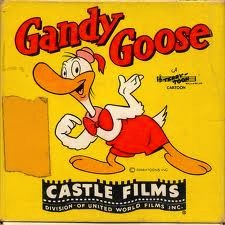
Gandy Goose is a Terrytoons cartoon character who first appeared in the 1938 short Gandy the Goose. He is frequently paired with Sourpuss, a cat, beginning in the 1939 short Hook Link and Sinker. Sourpuss' first appearance was in the 1939 The Owl and the Pussycat. Originally voiced by composer and orchestral arranger Arthur Kay from 1939 to 1941, Gandy spoke in a lyrical vocal parody of radio comedian Ed Wynn while Sourpuss vocally impersonated an impatient Jimmy Durante. Their surreal adventures often showcase extended dreams, bookended by coarse bedroom arguments.
Buster Bunny is a fictional character who had appeared in comic books from Standard Comics starting in 1949; this character is not related to the character of the same name from Tiny Toon Adventures.

Ralph Wolf and Sam Sheepdog are characters in a series of animated cartoons in the Warner Bros. Looney Tunes and Merrie Melodies cartoons. The characters were created by Chuck Jones.
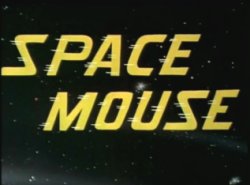
The first Space Mouse was a comic book character published from 1953 to around 1956 by Avon Publications. Space Mouse was also the name of a 1959 Universal Studios cartoon featuring two mice and a cat named Hickory, Dickory, and Doc. A second Space Mouse character was published by Dell Comics from 1960 to around 1965. The Dell Comics version was also featured in a 1960 cartoon produced by Walter Lantz, entitled The Secret Weapon.
Superkatt is an American cartoon animal comic book series by Dan Gordon, a jab at the “long-underwear” genre of superhero comics. The series stars Superkatt, an anthropomorphic cat who wears a bowtie, bonnet, and diaper as a superhero costume. Ron Goulart, author of Ron Goulart's Great History of Comic Books, said that Superkatt was Dang's most memorable comic book character. Denis Gifford, author of The International Book of Comics, said that the character "was as silly as his supercostume."

Squeak the Mouse is an Italian adult black comedy comic strip and later comic book created by artist Massimo Mattioli. The comic depicts attempts by its title character, the anthropomorphic Squeak the Mouse, to outwit a cat who is chasing him. The comic satirizes cartoon series such as Tom and Jerry, taking the content to extreme levels, which includes gory horror violence and explicit sexual content.













